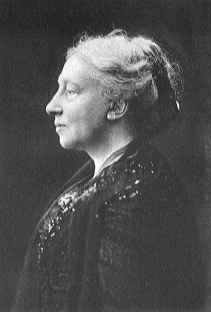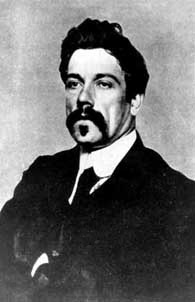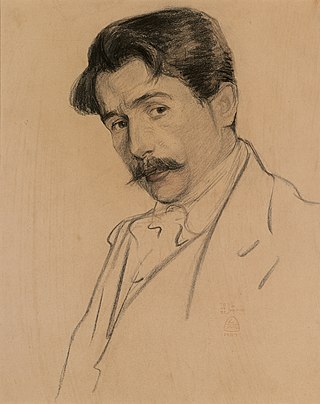Related Research Articles

William Butler Yeats was an Irish poet, dramatist, writer and politician. One of the foremost figures of 20th-century literature, he was a driving force behind the Irish Literary Revival and became a pillar of the Irish literary establishment who helped to found the Abbey Theatre. In his later years, he served two terms as a Senator of the Irish Free State.

Seamus Justin Heaney was an Irish poet, playwright and translator. He received the 1995 Nobel Prize in Literature. Among his best-known works is Death of a Naturalist (1966), his first major published volume. Heaney was and is still recognised as one of the principal contributors to poetry in Ireland during his lifetime. American poet Robert Lowell described him as "the most important Irish poet since Yeats", and many others, including the academic John Sutherland, have said that he was "the greatest poet of our age". Robert Pinsky has stated that "with his wonderful gift of eye and ear Heaney has the gift of the story-teller." Upon his death in 2013, The Independent described him as "probably the best-known poet in the world".

The Abbey Theatre, also known as the National Theatre of Ireland, in Dublin, Ireland, is one of the country's leading cultural institutions. First opening to the public on 27 December 1904, and moved from its original building after a fire in 1951, it has remained active to the present day. The Abbey was the first state-subsidized theatre in the English-speaking world; from 1925 onwards it received an annual subsidy from the Irish Free State. Since July 1966, the Abbey has been located at 26 Lower Abbey Street, Dublin 1.

Isabella Augusta, Lady Gregory was an Irish dramatist, folklorist and theatre manager. With William Butler Yeats and Edward Martyn, she co-founded the Irish Literary Theatre and the Abbey Theatre, and wrote numerous short works for both companies. Lady Gregory produced a number of books of retellings of stories taken from Irish mythology. Born into a class that identified closely with British rule, she turned against it. Her conversion to cultural nationalism, as evidenced by her writings, was emblematic of many of the political struggles to occur in Ireland during her lifetime.

Edmund John Millington Synge was an Irish playwright, poet, writer, collector of folklore, and a key figure in the Irish Literary Revival. His best known play The Playboy of the Western World was poorly received, due to its bleak ending, depiction of Irish peasants, and idealisation of parricide, leading to hostile audience reactions and riots in Dublin during its opening run at the Abbey Theatre, Dublin, which he had co-founded with W. B. Yeats and Lady Gregory. His other major works include In the Shadow of the Glen (1903), Riders to the Sea (1904), The Well of the Saints (1905), and The Tinker's Wedding (1909).

U Sports women's ice hockey is the highest level of play of women's ice hockey at the university level under the auspices of U Sports, Canada's governing body for university sports. Women's ice hockey has been played in U Sports since the 1997-98 season, when the governing body was known as the Canadian Interuniversity Athletics Union, following a long stint of teams only competing in the OUA. There are 35 teams, all of which are based in Canada, that are divided into four conferences that are eligible to compete for the year-end championship. As these players compete at the university level, they are obligated to follow the rule of standard eligibility of five years. This competition is considered as the second level in the pyramid of Canadian women's hockey, below the Canadian Women's Hockey League (CWHL).
The Irish Literary Revival was a flowering of Irish literary talent in the late 19th and early 20th century. It includes works of poetry, music, art, and literature.
The Cuala Press was an Irish private press set up in 1908 by Elizabeth Yeats with support from her brother William Butler Yeats that played an important role in the Celtic Revival of the early 20th century. Originally Dun Emer Press, from 1908 until the late 1940s it functioned as Cuala Press, publicising the works of such writers as Yeats, Lady Gregory, Colum, Synge, and Gogarty.

Susan Mary Yeats, known as Lily Yeats, was an embroiderer associated with the Celtic Revival. In 1908 she founded the embroidery department of Cuala Industries, with which she was involved until its dissolution in 1931. She is known for her embroidered pictures.
Anne Butler Yeats was an Irish painter, costume and stage designer.
Robin Skelton was a British-born academic, writer, poet, and anthologist.

Kathleen Ni Houlihan is a mythical symbol and emblem of Irish nationalism found in literature and art, sometimes representing Ireland as a personified woman. The figure of Kathleen Ni Houlihan has also been invoked in nationalist Irish politics. Kathleen Ni Houlihan is sometimes spelled as Cathleen Ni Houlihan, and the figure is also sometimes referred to as the Sean-Bhean Bhocht, the Poor Old Woman, and similar appellations. Kathleen Ni Houlihan is generally depicted as an old woman who needs the help of young Irish men willing to fight and die to free Ireland from colonial rule, usually resulting in the young men becoming martyrs for this cause, the colonial power being the United Kingdom. After the Anglo-Irish War, Kathleen Ni Houlihan became associated with the Irish Republican Army in Northern Ireland, especially during the Troubles.
Thomas Rice Henn, known professionally as T. R. Henn, was an Irish literary critic.
Thomas F. Kilroy is an Irish playwright and novelist.

Cathleen ni Houlihan is a one-act play written by William Butler Yeats and Lady Gregory in 1902. It was first performed on 2 April of that year and first published in the October number of Samhain. Lady Gregory wrote the naturalistic peasant dialogue of the Gillane family, while Yeats wrote Cathleen Ni Houlihan's dialogue.

Sarah Ellen Allgood, known as Sara Allgood, was an Irish-American actress. She first studied drama with the Irish nationalist Daughters of Ireland and was at the opening of the Irish National Theatre Society.

Stephen MacKenna was a journalist, linguist and writer of Irish descent. He is perhaps most well known for his important English translation of the Greek-speaking philosopher Plotinus, introducing Neoplatonic philosophy to a new generation of readers.

Thoor Ballylee Castle is a fortified, 15th-century Anglo-Norman tower house built by the septs de Burgo, or Burke, near the town of Gort in County Galway, Ireland. It is also known as Yeats' Tower because it was once owned and inhabited by the poet William Butler Yeats.
George Roberts (1873–1953) was an Irish actor, poet and publisher.
Helen Laird (1874–1957), was an Irish actress also known as ‘Honor Lavelle’, a costumier, teacher, and feminist.
References
- ↑ "Ann Saddlemyer". Oxford Reference. Retrieved 2020-04-30.
- 1 2 3 4 5 "Ann Saddlemyer (Fonds 88) | Special Collections | Collections | E.J. Pratt Library". library.vicu.utoronto.ca. Retrieved 2020-04-30.
- 1 2 3 4 5 "John Simon Guggenheim Foundation | Ann Saddlemyer" . Retrieved 2020-04-30.
- ↑ "Eleanor Ann Saddlemyer". Royal Irish Academy. 2015-10-19. Retrieved 2020-04-30.